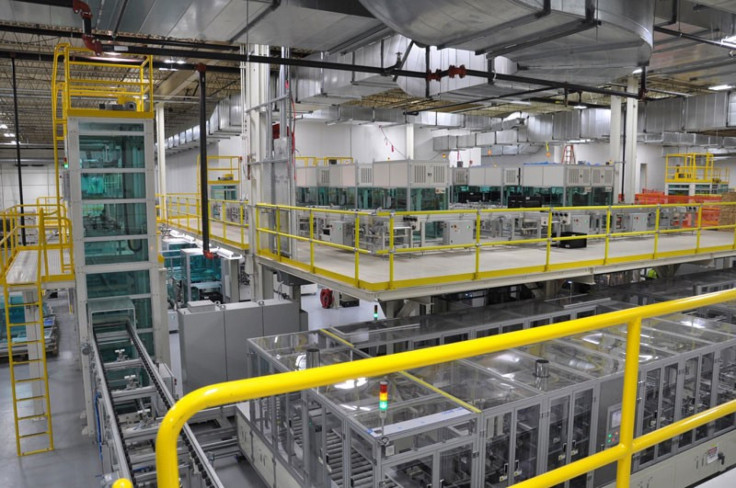A123 Once Again Thrusts Taxpayer Funded Failed Green Tech Into Spotlight

A123 Systems Inc. (Nasdaq: AONE) once had a promising future making electric car batteries. Then a series of company missteps coupled with a glut in the marketplace sent A123, based in Waltham, Mass., into bankruptcy protection on Tuesday.
The lithium-ion battery technology company was created at MIT. Although its public-offering presentations in 2009 were delivered to standing-room-only audiences, today it has become the latest U.S. government-sponsored company to file for bankruptcy. It isn't the first, and it probably won't be the last.
The issue of failed ventures backed by government guarantees has been used by opponents of the Barack Obama administration’s stimulus spending policy. A123’s bankruptcy protection filing was announced on the same day as the second of three presidential debates and a day before another failed government-backed green-energy company, Solyndra Inc., goes before a federal bankruptcy judge in Delaware. The timing of these developments could only be worse for the Obama campaign if they had happened even closer to the Nov. 4 U.S. presidential election.
A123 received a $249 million federal loan guarantee in 2009 as part of Washington's promotion of alternative energy technologies. It ended up using $129 million to build a plant in Livonia, Mich. In its bankruptcy court filing, A123 listed assets of $459.8 million and liabilities of $376 million as of Aug. 31.
Under terms of a deal with Johnson Controls, Inc. (NYSE: JCI), it will provide $72.5 million so A123 can operate in bankruptcy. Johnson Controls plans to pay $125 million for A123’s automotive technology, products and customer contracts; its facilities in Livonia and Romulus, Mich.; its cathoe powder manufacturing facilities in China; and A123’s equity interest in Shanghai Advanced Traction Battery Systems Co.
Johnson Controls was also a recipient of a $299 million grant under the same initiative.
The A123 collapse follows a number of similar failures of government-supported green technology start-ups. Here are four of them:
Solyndra Inc. was formed in 2005, two months after Congress approved and Pres. George Bush signed the Energy Policy Act of 2005 that provided loan guarantees. In 2009 it received a $535 million loan guarantee from the Energy Dept. Two years later, it closed its factory, laid off 1,100 workers and filed for bankruptcy.
Earlier this year, Abound Solar filed for bankruptcy, losing about $70 million in taxpayer funding. Besides the funding, it had received a $400 million loan guarantee under terms of the Energy Policy Act of 2005.
Ener1, an Indianapolis-based lithium battery manufacturer that took an $118 million grant from the Energy Dept. in 2009, is now in bankruptcy, along with an affiliate named EnerDel.
Beacon, a flywheel-based energy storage manufacturer in Woburn, Mass., filed last October for Chapter 11 bankruptcy protection. A month later the company agreed to sell a manufacturing facility to pay off the Dept. of Energy loan. In February, the company was bought by private equity firm Rockland Capital LLC.
© Copyright IBTimes 2024. All rights reserved.






















